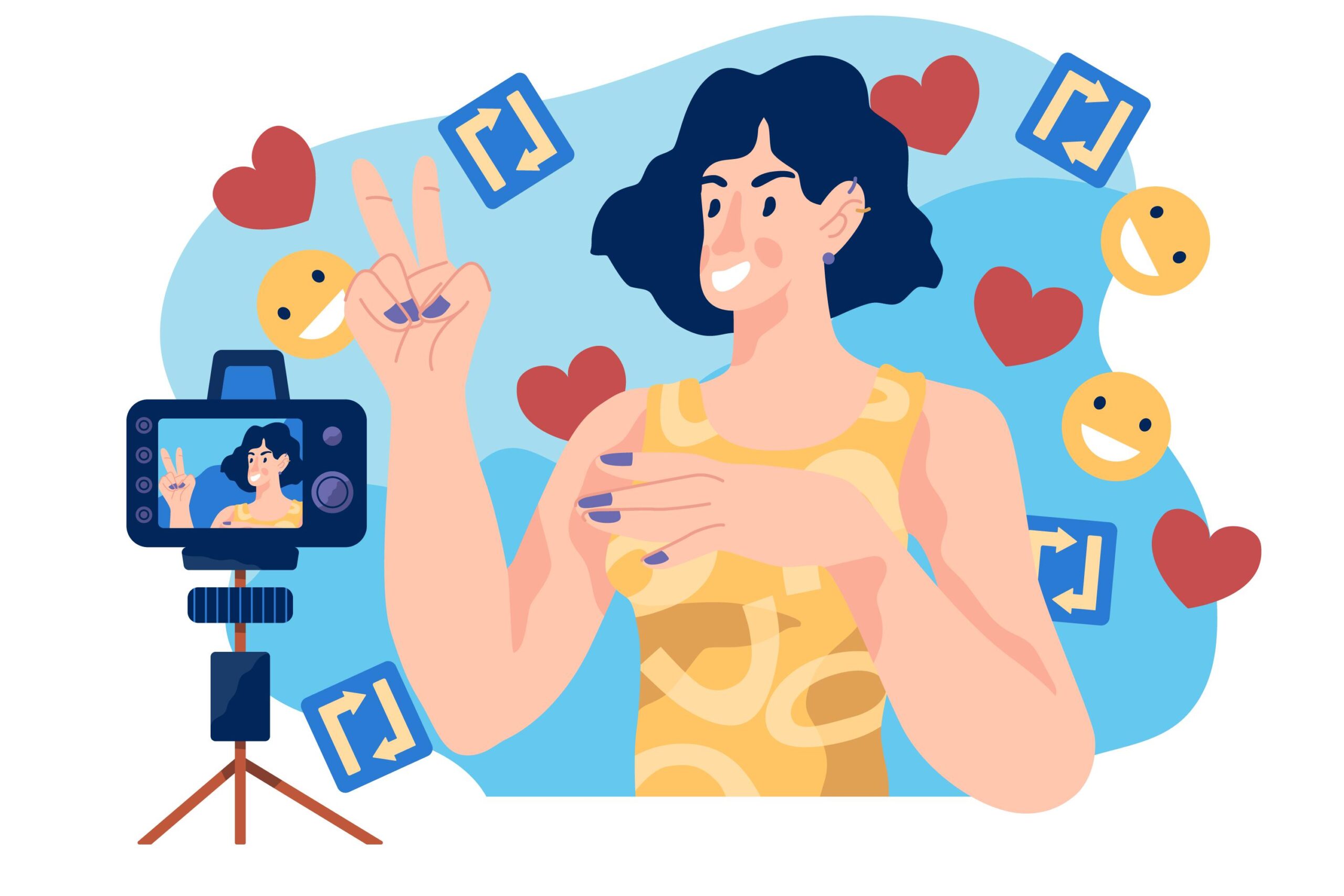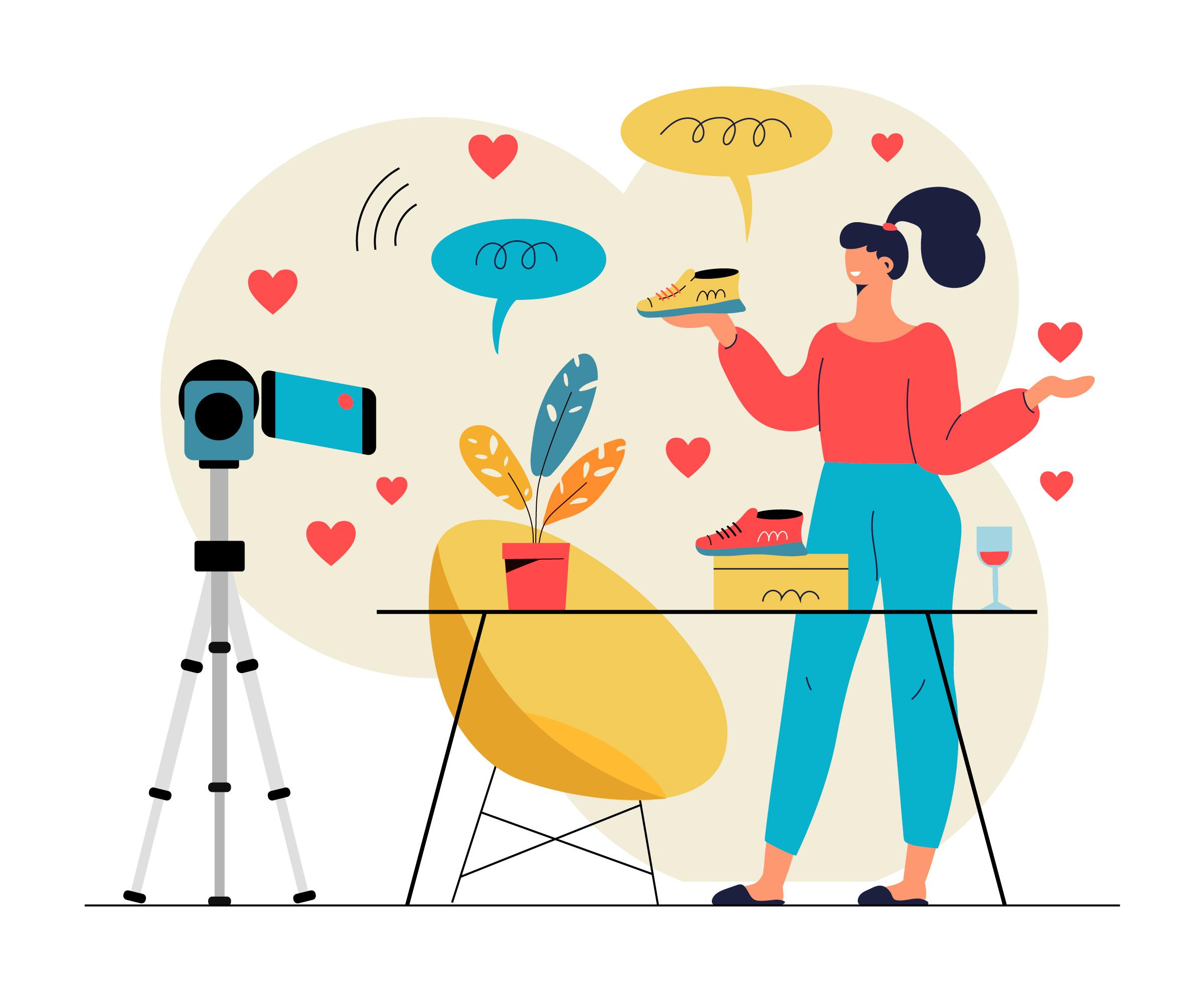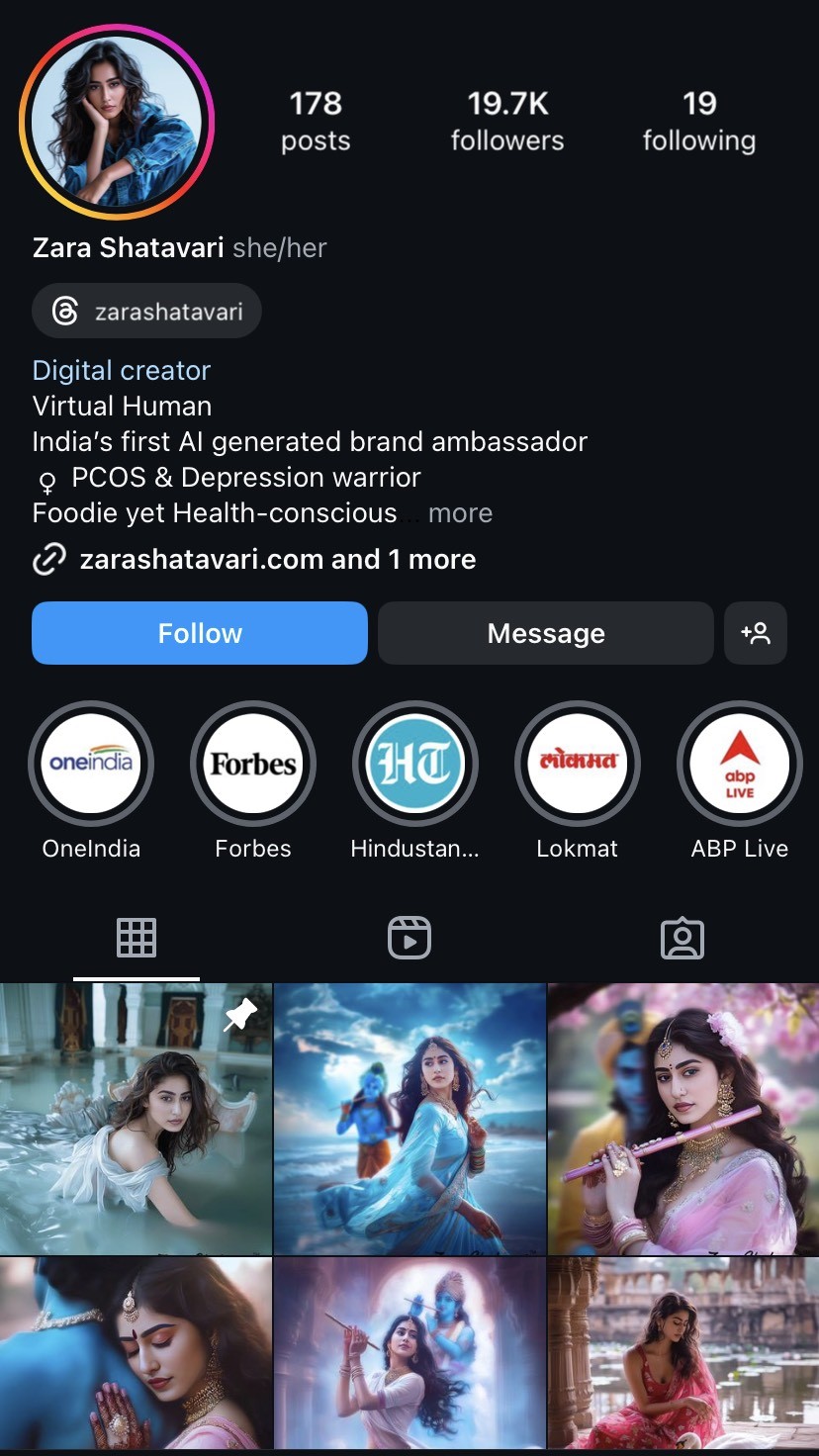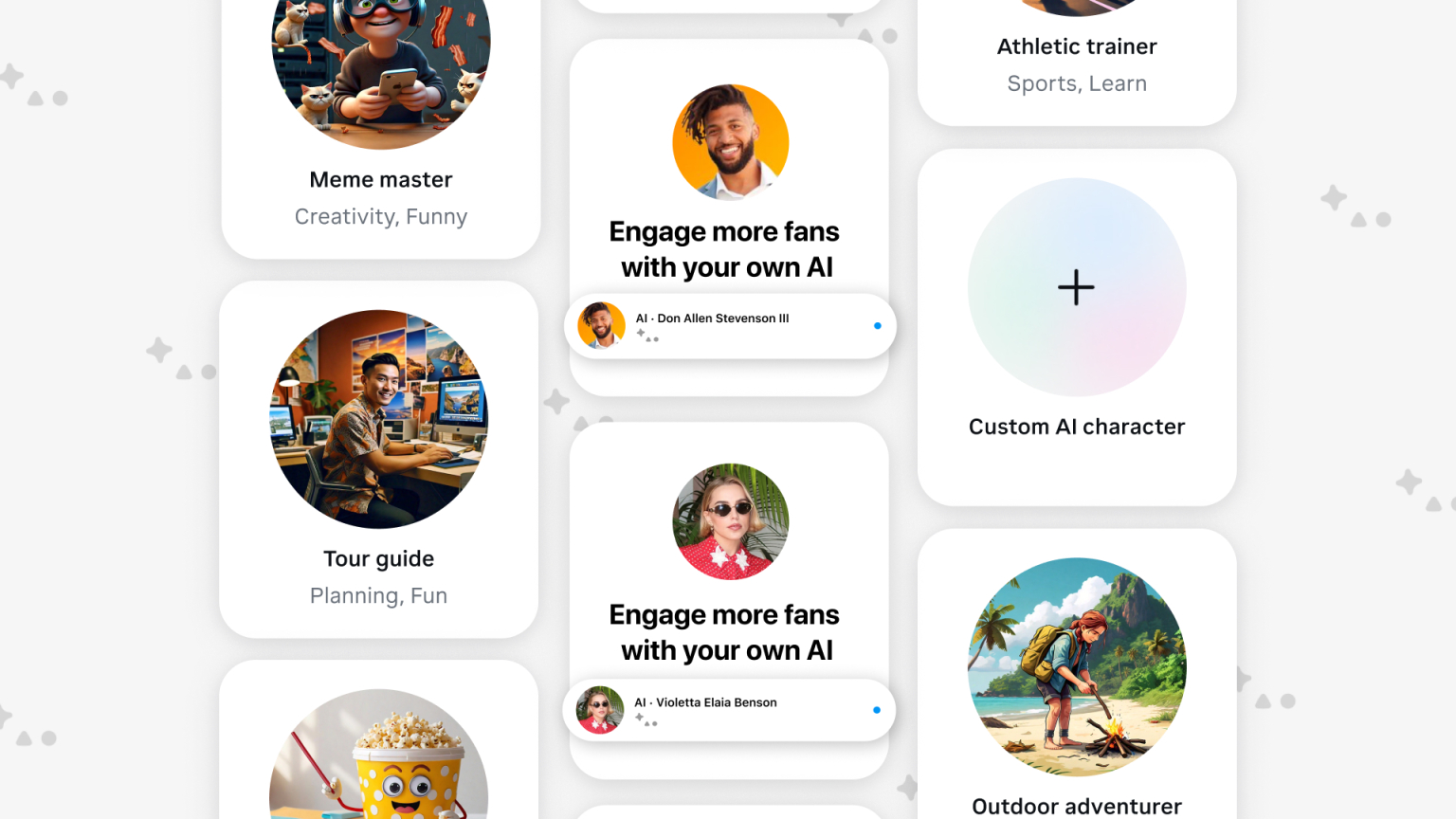
In the last few years, Meta AI has introduced different features, disrupting influencer marketing and engagement between creators and fans on Instagram. Between the introduction of virtual humans and the Creator AI studio where creators can train AI bots to respond back to fans, the line between reality and virtual reality becomes blurred.
AI has transformed our lives, for the better and for worse. Tasks are completed quicker and more efficiently, questions are answered by the speed of light (well, kind of) so no more rummaging through papers to find an answer, and transcriptions of meetings helps us remember what was said in the meeting at 9am on a Monday morning.
The creation of AI has helped us more quicker and faster than generations before but are we taking it a step too far by creating virtual humans and training AI bots to be like us?
In our blog, we’ll talk about how influencer marketing is changing for both brands and influencers and how the new features introduced by Meta AI are changing social media forever.
Traditional Advertising is out, Influencer Marketing is in

When we think of the word influencer, we think of the modern day person who has amassed a large following on social media platforms through niche-specific content that targets a specific audience.
But if we think of the word “influence”, it can be used for anyone that’s able to influence a large amount of people and get them to do something.
The influencers in our life before social media were the Church, the government, even our parents but fast forward to the present day, creators on the internet now have a bigger influence on us than institutions and governments.
The mid-2000’s was when Facebook and Twitter were born and the term “influencers” started to gain traction.
As people started to grow their followings and see quick engagement, brands noticed a trend appearing that led to them partnering with influencers to expand their reach and increase sales.
Influencer marketing has become more popular than traditional marketing because of the deeper connection made through social media, compared to billboards and AD’s on TV.
People trust other people’s opinions before buying. How many times have you checked reviews before you bought something?
Some influencers have come under fire for collaborating with brands that don’t fit their niche, giving the impression that they’ve partnered for the money.
The importance of choosing the right influencer for the right campaign can make or break the trust between the influencer and their fans.
In the last year, money transparency around how much influencers are making has been exposed with some influencers that have 10 million followers are asking for 10,000 USD for just one video. Although it comes with recognition and visibility, this doesn’t guarantee sales.
The introduction of AI-Generated Influencers have risen in the past few years making it more lucrative for businesses to cut down on costs and logistics but there are ethical concerns to consider.
The Rise of AI-Generated Influencers
If you search “Top 15 AI influencers” on Google, a list of AI-Generated influencers will pop up on your screen.
If you check out those influencers, they aren’t real people but a virtual human that has built a large following.
Brands like Chanel, Red Bull and Calvin Klein have used these AI-Generated influencers for online promotions.
One popular influencer is Zara Shatavari who has 19.7k followers on instagram and is India’s first AI generated brand ambassador.

Zara was created to spread awareness for those living with polycystic ovary syndrome (PCOS) and runs a health-related blog, posts about travel and fitness.
Rahul Choudry, who created Zara, wanted to partner with a specific celebrity with a hormonal imbalance but chose to create an AI-version that was much cheaper, always available, and gives him the ability to adapt it when needed.
Another AI influencer goes by Reembot on Instagram focusing on fashion and lifestyle content.
Influencers post their day in their lives, their workout routine, their lifestyle and fans get invested because of the relatedness of it but how can an AI influencer that doesn’t live in the real world create that same relatedness when we know it’s not real?
Backlash from people online have called out brands for choosing to invest in virtual humans, rather than real influencers.
As more brands continue to choose AI-versions to cut down on costs and logistics, is REAL influencer marketing dead?
The Future of Engagement
Along with AI Influencers, Meta’s CEO, Mark Zuckerberg, rolled out creator AI for select creators in the US where they can create AI bots of themselves.
He’s testing the feature out to see how people interact with it first before he rolls it out to other countries.
The feature will allow creators to train an AI version of themselves to respond back to comments and direct messages that are sent from fans.

Creators will train the AI bot to replicate their personality and personalize their messages to maintain authenticity.
Creators receive a huge amount of messages every day, sometimes asking for something simple like a link or a frequently asked question.
Meta is committed to enhancing engagement while also being open about the fact that the fan will be interacting with an AI bot.
This is extremely important that the fan KNOWS it’s not the creator himself responding but that the responses are personable and are scripted out to respond in this way.
However, the complication comes when a fan is asking for a more complex question that requires a deeper answer that’s subjective to the influencer.
This feature is still in BETA so it’ll be interesting to see how it plays out and how creators can maintain the level of authenticity and engagement needed.
GoViral Conclusion
AI has integrated itself into our lives where reality and virtual reality are becoming nearly indistinguishable. Meta AI continues to advance and new features are emerging quicker than before.
Social media has changed drastically since 2007 at a quick speed and doesn’t seem to be slowing down as Mark Zuckerberg has big plans for the Metaverse with talks about holographic glasses projecting real people in virtual reality (VR).
The opportunities and possibilities that come with this new technology is immense and it feels like it’s just the tip of an iceberg.
However, the question still stands. How far is too far?
Subscribe to our monthly newsletter to receive social media upates, trends, and marketing insights.
